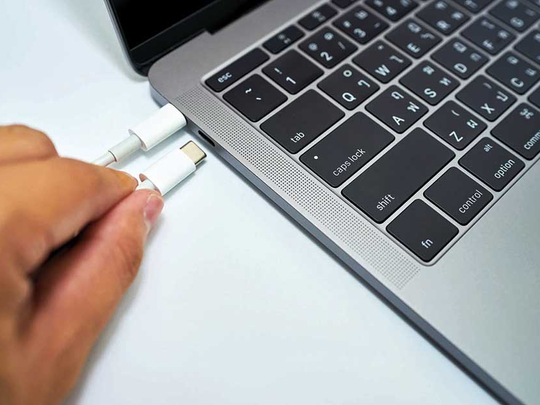
Dubai
The number of devices having at least one USB-C port is forecast to increase at a five-year compound annual growth rate of over 70 per cent, growing from 300 million devices in 2016 to just under five billion devices in 2021.
The USB Type-C (USB-C) is by far the most advanced wired interface technology available, helping to modernise many consumer electronic product segments.
Simultaneous transfer of data, video, along with fast-speed charging capabilities through a universal port, is leading the growth of USB-C connectors used in smartphones, laptops and even automobiles.
One unique feature of the USB-C connector is its simultaneous support of USB Power Delivery, performance (data transfer) and various video and audio interfaces through Alternate-Mode (Alt-Mode) protocols.
The Alternate Mode includes both the wired audio-video interface and the wired-data interface. High Definition Multimedia Interface Alternate Mode (HDMI Alt-Mode) and the DisplayPort Alt-Mode are the most popular form of wired-video Alternate Modes. Whereas, the high bandwidth data or performance interface includes USB 3.0, USB 3.1, USB 3.2 and Thunderbolt Alt-Mode.
Alt Mode allows for protocols other than USB to be transferred over a USB connection, such as DisplayPort, HDMI, MHL or Thunderbolt over the Type-C interface.
The top five device markets adopting USB-C connectors in 2017, in terms of unit shipments, were mobile phones, mobile PCs, flash drives, media tablets and docking stations.
Noman Akhtar, analyst for smart home appliances at IHS Markit, said that the total market, in terms of revenue attributed to USB-C connectors (including both basic and the full-featured versions), is forecast to grow at a five-year growth rate of 30 per cent, reaching almost $1.2 billion in 2021. The wireless and computing (PC) segments currently driving the USB Type C adoption will continue to be the largest product segments through 2021.
The USB Type-C (2.5 x 8.3 millimetre) connector with 24 pins is relatively larger than the conventional micro USB Type-A (2.5 x 7.5 millimetre) connector used by smartphone makers. However, the USB-C connector is double-sided and reversible. A full-featured USB-C connector not only supports a high-data transfer rate, but also enables lighter and thinner designs.
Akhtar said the wireless segment, including mobile phones, media tablets and their accessories, is expected to remain the largest adopter of USB-C for the next five years, followed by the computing, consumer electronics and automobiles segments.
While HDMI in its native form is expected to be the most popular wired interface technology used to transfer video, he said the HDMI Alt-Mode is not expected to make its way into the consumer electronic segment until the middle of 2018, with early adoption in digital-still cameras and video cameras.
“Thunderbolt is the fastest data interface technology, with the latest version reaching up to 40 gigabits per second (Gb/s). Thunderbolt in the Alt-Mode format is expected to remain a niche market, focused mainly on the computing segment,” he said.
The current hindrance affecting the growth of USB-C adoption is the additional cost of semiconductor content, compared to an interface integrated circuit (IC) needed for a traditional USB Type-A or USB Type-B port. The global market for semiconductor ICs used in the USB-C solution is forecast to expand at an annual rate of 107 per cent in next five years, reaching $3 billion and providing significant growth opportunities for semiconductor manufacturers.












